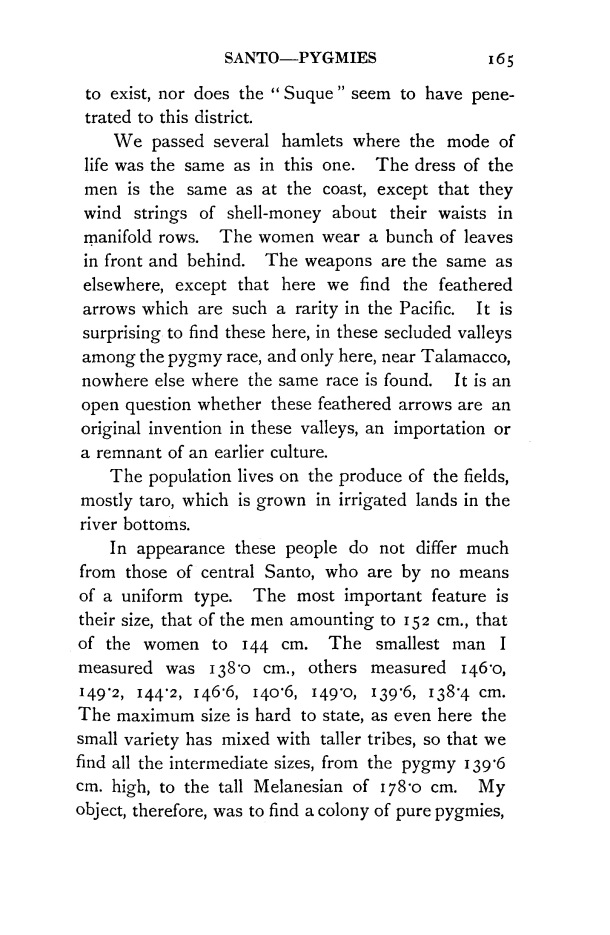|
|  [Note: this transcription was produced by an automatic OCR engine]
SANTO—PYGMIES I 6 5
to exist, nor does the “Suque” seem to have pene-
trated to this district.
We passed several hamlets where the mode of
life was the same as in this one. The dress of the
men is the same as at the coast, except that they
wind strings of shell-money about their waists in
manifold rows. The women wear a bunch of leaves
in front and behind. The weapons are the same as
elsewhere, except that here we find the feathered
arrows which are such a rarity in the Pacific. It is
surprising to find these here, in these secluded valleys
among the pygmy race, and only here, near Talamacco,
nowhere else where the same race is found. It is an
open question whether these feathered arrows are an
original invention in these valleys, an importation or
a remnant of an earlier culture.
The population lives on the produce of the fields,
mostly taro, which is grown in irrigated lands in the
river bottoms.
In appearance these people do not differ much
from those of central Santo, who are by no means
of a uniform type. The most important feature is
their size, that of the men amounting to I 52 cm., that
of the women to I44 cm. The smallest man I
measured was 1380 cm., others measured 146'0,
149'2, 144'2, I466, 1406, 1490, I396, 138'4 cm.
The maximum size is hard to state, as even here the
small variety has mixed with taller tribes, so that we
find all the intermediate sizes, from the pygmy 1396
cm. high, to the tall Melanesian of 1780 cm. My
object, therefore, was to find a colony of pure pygmies,
|